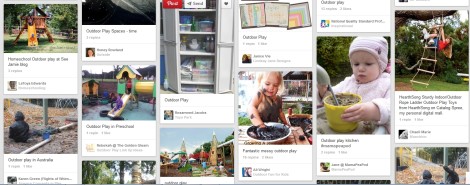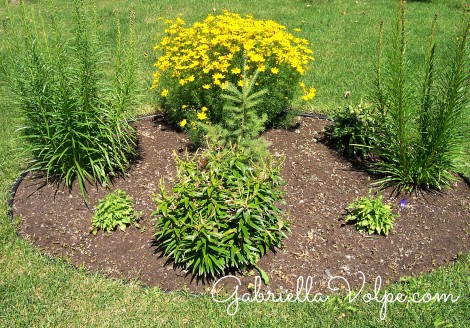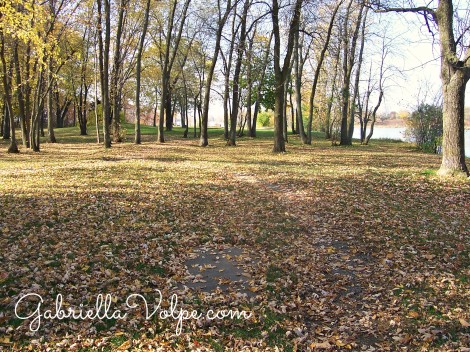This article is part of the 31 Days of Pinterest Hacks series. Find the main page for this series here.
Being in the great outdoors is one of my favorite things to do with my little guy. However, we have significant limitations because he’s not walking or standing on his own.
When scouring Pinterest boards, it’s hard to escape the many exciting activities pinned for outdoor play. But, for a child who cannot run, climb or jump as other children can, it requires a lot of creativity (and physical labor) on the part of the adult. This post takes you through some suggestions to enjoying the outdoors as best as possible with a child who needs to be nurtured by Mama Nature’s goodness.

Pinterest offers creative ideas for outdoor play.
Why outdoor play may be a challenge for neurodivergent or disabled children
- Children with physical disabilities may not have the freedom to move around in play areas that are not adapted.
- Children with sensory aversions may find many of the outdoor textures and temperatures challenging to deal with.
- Children with sound sensitivities may find themselves with an overload of sounds to cope with.
- The outdoors offers an array of scents which may not be easy for some children to handle.
Suggestions for adaptations/modifications for outdoor play
- Plan ahead. Being outside brings on a slew of new issues for an adult to deal with—be prepared for everything. From appropriate clothing to adapted equipment to playthings to planning the play space you will be in, it’s crucial to have it all thought-out and ready. The child probably needs to be supervised, so you don’t want to be rushing back for something you’ve forgotten. When my son was very young (and I was new to mothering), I had a list of things to take with me when heading out for a walk, as well as a list of things to take when going to therapy, and a list of things to take when visiting grandma (or a friend). Heading out the door with a child who needs so many things (like diapers, food and food thickener, water, bibs, wash cloths, change of clothes, medication, orthotics, shoes to fit over those orthotics, adapted seat, adapted stroller, etc.) even going for a walk around the block was overwhelming. I strongly recommend writing a list (or two, or three) and keeping it handy when you head outdoors for play. And, then, have everything ready by the door.

Planting a garden with or for a child(ren) is therapeutic. We planted this garden to accompany that little sapling (in the middle) when my son was born. It’s now taller than he is!
- Start in the backyard or a familiar outdoor space. While it’s great to explore the wild, wide world, begin in a familiar space when playing outdoors. The child has a lot to take in just by being outside.
- Play in quieter places. If in a busy city neighborhood, find a nature park closest you and hang out there for a few hours. The trees muffle the sounds for children with hearing sensitivities. It’s a great break away from the noisy buses and trucks. See how the child reacts in this new environment.

This is a nature park one street behind ours. It borders the river and it makes for such a soothing learning environment. We sometimes come here to sit on a bench with a book rather than reading it at home.
- Use outdoor equipment, if possible. If the child has a physical disability, a swing is wonderful to experience. Not only does it benefit the vestibular system, it is also very calming for a child.
- Take the child as close as possible to natural elements in the environment like a garden, a river, and trees. If it means pushing the wheelchair up to the river bank, do it. Label it. Toss stones. Laugh about it.
- Pick up the wonders of nature and allow the child to examine them. On our walks, I like to pick up long sticks and large stones and leaves and whatever I find and bring them to my son. It took a long time before he would reach out to touch them, but now he holds the lavender stem with his fingers for a few seconds before he decides he doesn’t want to hold it and tosses it. He does that with most of the items I bring him. But, it doesn’t matter. He might not be playing in a nature sensory bin like those Pinterest kids are, but he’s finally touching and breathing in nature up close—in his own way.

Finding and picking leaves on our walks. The dried leaves go “crunch, crunch, crunch” while the fresh ones “float down ever so slowly on the ground.”
- Talk about the sounds. My son has a hearing loss, and still, sounds are significant to him. While some sounds frighten him (like that high pitched bark of our neighbour’s dog), some sounds just delight him (like the cooing of the turtle doves). You can find a ton of new sound words just by being outside. Sign or use AAC. Connect the language to the sounds.

My son can’t pick up sticks and leaves, but he can ride through and touch the low-lying willow tree branches.
- Have a structure for play. If the child can run or walk around, you might find that having structure helps reduce anxiety and overwhelm. If the child knows what to do (instead of being left to run around aimlessly in a vast space), you will find that they’ll be better able to self-regulate. Have a ball out to play with, or a mini-obstacle course, or a water table.
- Be ready to head back in. Don’t insist on having a child deal with difficult outdoor situations. Be prepared with a plan B. Cut your session short and be OK with it, even if it means leaving friends at the park.
What does outdoor play look like for you?
Is it difficult to get outdoors with a neurodivergent or disabled child? I’d love to help you find ways through a personalized consultation.
Related Article:

0 Comments